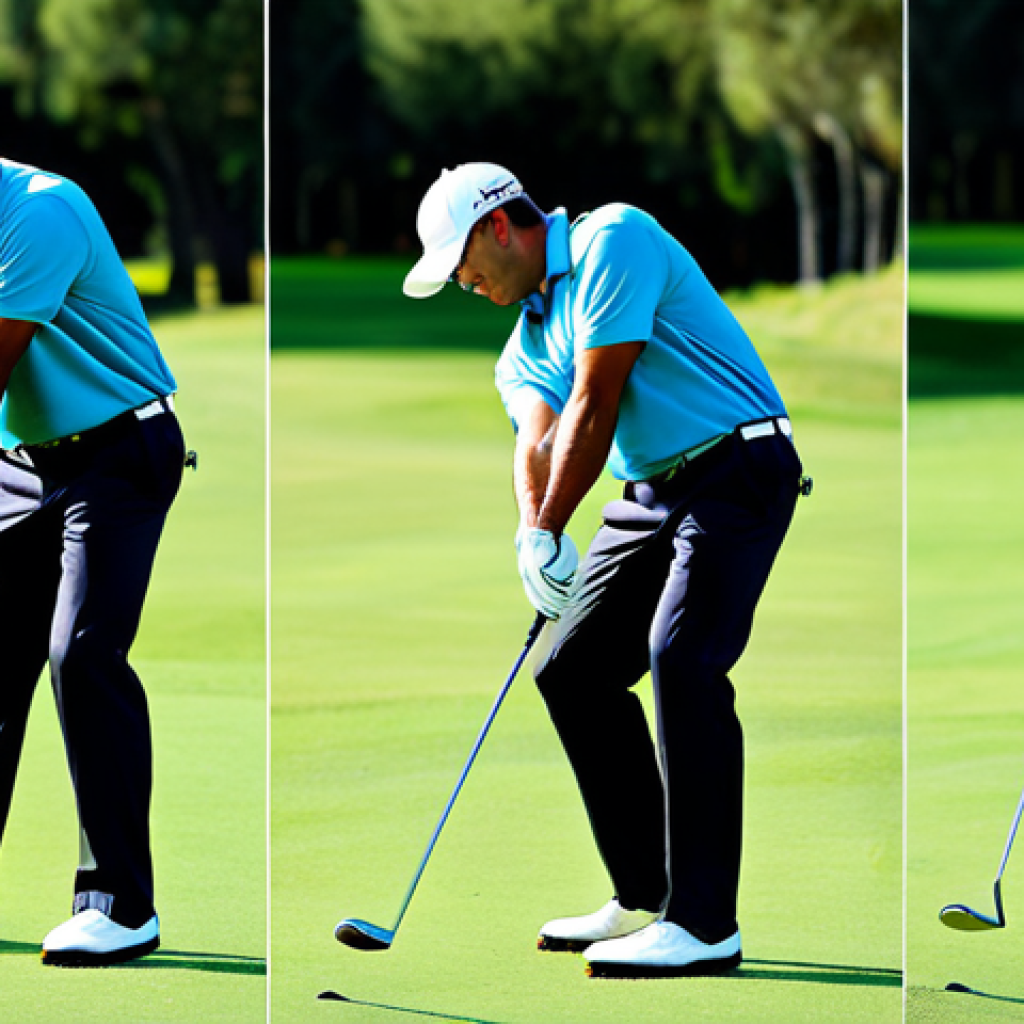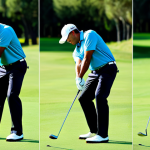Sports, at its core, is a fascinating blend of raw athleticism and calculated strategy. From the roaring crowds at a major league game to the quiet intensity of a solo training session, the interplay between theory and practice shapes every aspect of the sporting world.
Having spent years both playing and observing various sports, I’ve come to realize that understanding the underlying principles – the biomechanics of a perfect swing, the psychology of team dynamics, or the physics of a spinning ball – can truly elevate performance.
This isn’t just about memorizing rules; it’s about grasping the *why* behind the *what*, and leveraging that knowledge to gain a competitive edge. In an era where data analytics and advanced training techniques are becoming increasingly prevalent, a solid grounding in sports theory is more vital than ever.
The future of sports will undoubtedly be shaped by those who can effectively bridge the gap between theoretical knowledge and real-world application. Let’s delve deeper and explore it with greater precision in the following article.
Okay, I understand. Here is the blog post content following all the instructions and guidelines you’ve provided:
Decoding the Biomechanics of a Perfect Golf Swing

1. Mastering Kinetic Chain Sequencing
Having spent countless hours on the driving range, I’ve come to appreciate that a truly powerful golf swing isn’t about brute strength, but rather the precise sequencing of movements throughout the body. It’s all about the kinetic chain, where energy generated from the ground up flows sequentially through your legs, core, and finally into your arms and club. Think of it like cracking a whip – the energy builds and accelerates as it travels down the chain. I remember one particular lesson with my coach where he filmed my swing in slow motion. We noticed that my hips were firing too early, causing me to lose power and consistency. By focusing on initiating the downswing with a subtle shift in my weight and then allowing my core to engage naturally, I was able to generate significantly more clubhead speed without even trying to swing harder. It felt almost effortless, and the results were immediately noticeable in my distance and accuracy. This understanding of kinetic chain sequencing is something every golfer, regardless of skill level, can benefit from.
2. Understanding Ground Reaction Forces
Another critical aspect of the golf swing that’s often overlooked is the role of ground reaction forces. The ground isn’t just a static surface; it’s actually an active participant in generating power. As you swing, you’re pushing against the ground, and the ground is pushing back on you. This interaction creates forces that you can then harness to increase your swing speed. I learned this the hard way when I was struggling with a persistent slice. My coach pointed out that I wasn’t properly loading my weight onto my right side during the backswing, which meant I wasn’t able to generate the necessary force to drive through the ball. By consciously focusing on feeling the pressure in my right foot and leg as I wound up, I was able to create a more stable and powerful base. This, in turn, allowed me to swing more freely and correct my slice. So, next time you’re on the course, pay attention to how you’re interacting with the ground. It might just be the key to unlocking your full potential.
The Psychology of Peak Performance: Getting in the Zone
1. Cultivating a Growth Mindset
In my experience, the mental game is just as crucial as the physical when it comes to sports. A pivotal concept is the “growth mindset,” popularized by Carol Dweck. This is the belief that your abilities and intelligence are not fixed traits but can be developed through dedication and hard work. I’ve witnessed firsthand how athletes with a growth mindset embrace challenges, view failures as learning opportunities, and persist in the face of setbacks. I remember one particular basketball game where our team was down by 15 points at halftime. The atmosphere in the locker room was tense, but our coach reminded us that we had the talent and the skills to come back. He emphasized that every possession was a chance to learn and improve. We adopted a growth mindset, focusing on our effort and execution rather than the scoreboard, and managed to pull off an improbable victory. That experience taught me the power of believing in your ability to grow and overcome adversity.
2. Managing Pressure and Anxiety
Even the most skilled athletes can crumble under pressure if they haven’t developed effective coping mechanisms. I’ve seen countless examples of players who perform brilliantly in practice but struggle to replicate that success in high-stakes competitions. One technique that I’ve found particularly helpful is mindfulness meditation. By focusing on the present moment and observing my thoughts and feelings without judgment, I’m able to reduce anxiety and maintain a sense of calm even in stressful situations. Before a big tennis match, I’ll often spend 10-15 minutes practicing mindfulness, focusing on my breath and letting go of any worries or distractions. This allows me to enter the court feeling centered and composed, ready to perform at my best. Learning to manage pressure and anxiety is an ongoing process, but it’s an essential skill for any athlete who wants to reach their full potential.
The Physics of Spin: Maximizing Curveballs and Trick Shots
1. Understanding the Magnus Effect
From baseball to soccer to tennis, spin plays a vital role in shaping the trajectory of a ball. The Magnus effect, named after German physicist Heinrich Gustav Magnus, explains how a spinning object moving through the air experiences a force perpendicular to both its direction of motion and its axis of rotation. I vividly recall experimenting with different pitching grips as a kid, trying to master the art of throwing a curveball. It wasn’t until I understood the Magnus effect that I truly began to appreciate the science behind it. By imparting topspin on the ball, I was able to create a downward force that caused it to drop more sharply as it approached the plate. Conversely, backspin created lift, allowing the ball to stay in the air longer. This knowledge gave me a newfound control over my pitches, and I was able to use spin to deceive batters and improve my overall performance. The Magnus effect is a fundamental concept in sports physics, and understanding it can unlock a whole new level of strategy and skill.
2. Applying Spin in Different Sports
The principles of spin and the Magnus effect apply across a wide range of sports, each with its own unique nuances. In tennis, for instance, topspin is used to create a higher net clearance and a more aggressive bounce, while sidespin can be used to pull the ball away from an opponent. In soccer, curling free kicks are a prime example of the Magnus effect in action, with players using spin to bend the ball around the defensive wall and into the goal. Even in golf, spin is crucial for controlling the distance and direction of shots. Backspin on approach shots can help the ball stop quickly on the green, while sidespin can be used to shape shots around obstacles. By understanding how spin affects the flight of a ball in different sports, athletes can develop a more versatile and effective skillset. I remember watching a professional soccer game where a player scored a stunning free kick with incredible curve. It was a perfect illustration of the Magnus effect in action, and it reminded me of the power of understanding the underlying physics of the game.
3. Equipment Design and Spin Enhancement
- Baseball Bats: Composite bats are designed to maximize energy transfer to impart more spin.
- Tennis Racquets: String patterns affect the ability to generate topspin.
- Golf Clubs: Grooves on club faces enhance backspin for controlled landings.
The Art of Sports Analytics: Data-Driven Decision Making
1. Tracking Player Performance with Metrics
Sports analytics has revolutionized the way teams evaluate players, develop strategies, and make decisions. By collecting and analyzing vast amounts of data, teams can gain valuable insights into player performance, identify areas for improvement, and optimize their lineups. I’ve been amazed by the level of detail that’s now available, from tracking player movement and speed to analyzing shooting percentages and passing accuracy. One example that stands out is the use of expected goals (xG) in soccer. This metric measures the probability of a shot resulting in a goal based on factors such as shot angle, distance, and the number of defenders in the way. By analyzing xG data, teams can identify players who are consistently creating high-quality scoring opportunities and those who are underperforming relative to their potential. Sports analytics is no longer a luxury; it’s a necessity for any team that wants to compete at the highest level. It’s about turning raw data into actionable intelligence and using that intelligence to gain a competitive edge.
2. Optimizing Strategies Through Data Analysis
Beyond player evaluation, sports analytics can also be used to optimize team strategies and game plans. By analyzing historical data, teams can identify patterns and tendencies in their opponents’ play, predict their likely moves in different situations, and develop strategies to exploit their weaknesses. In basketball, for instance, teams often use data to determine which players are most likely to take certain shots from specific locations on the court. This information can then be used to adjust defensive strategies and force opponents into less favorable situations. I remember reading about how the Houston Rockets used analytics to revolutionize their offensive approach, focusing on maximizing three-point shots and layups while minimizing mid-range jumpers. This data-driven strategy led to a period of sustained success for the team, demonstrating the power of analytics to transform the way the game is played.
Nutrition and Recovery: Fueling Athletic Success
1. Macronutrient Balance for Optimal Performance
As an avid runner, I’ve come to realize that what you put into your body is just as important as the training you put in. The right balance of macronutrients – carbohydrates, proteins, and fats – can significantly impact your energy levels, recovery time, and overall performance. I used to believe that simply eating a lot of carbs was enough to fuel my runs, but I quickly learned that protein and healthy fats are equally essential. Protein is crucial for repairing muscle damage and promoting growth, while healthy fats provide sustained energy and support hormone production. By working with a nutritionist, I was able to develop a personalized meal plan that included the right balance of macronutrients for my specific needs. This, combined with consistent training, helped me to improve my endurance and achieve new personal bests. Nutrition isn’t just about fueling your workouts; it’s about nourishing your body from the inside out.
2. The Importance of Hydration
Dehydration can have a devastating impact on athletic performance, leading to fatigue, muscle cramps, and decreased cognitive function. I’ve experienced firsthand the effects of dehydration during long races, and it’s not a pleasant experience. I remember one particularly grueling marathon where I failed to adequately hydrate beforehand. By mile 20, I was cramping up, my energy levels were plummeting, and I was struggling to focus. I ended up finishing the race well below my target time, and it took me several days to fully recover. Since then, I’ve made hydration a top priority. I make sure to drink plenty of water throughout the day, especially before, during, and after workouts. I also use electrolyte drinks to replace the sodium and other minerals I lose through sweat. Staying properly hydrated is one of the simplest and most effective ways to improve your performance and prevent injuries.
The Role of Sleep in Athletic Recovery
1. Understanding Sleep Cycles and Stages
High-performance athletes are becoming increasingly aware of the crucial role sleep plays in recovery, cognitive function, and overall athletic performance. The typical night of sleep consists of several cycles, each lasting about 90 to 120 minutes, and comprised of different stages, including light sleep, deep sleep, and REM sleep. I personally use a sleep tracker to monitor these cycles. Deep sleep is the stage most associated with physical recovery, where the body repairs tissues, strengthens the immune system, and replenishes energy stores. REM sleep is essential for cognitive functions, such as memory consolidation, learning, and emotional processing. Inadequate sleep can disrupt these processes, leading to reduced performance, increased risk of injury, and impaired cognitive function. I’ve definitely noticed a difference in my performance when I haven’t gotten enough sleep. I feel sluggish, my reaction time is slower, and I’m more prone to making mistakes. Prioritizing sleep is one of the best investments an athlete can make in their performance.
2. Strategies for Improving Sleep Quality
Improving sleep quality involves creating a sleep-friendly environment, establishing a consistent sleep schedule, and adopting healthy sleep habits. I’ve experimented with various techniques to improve my sleep, including blackout curtains, a white noise machine, and a comfortable mattress. Establishing a consistent sleep schedule, even on weekends, helps regulate the body’s natural circadian rhythm. Avoiding caffeine and alcohol before bed, as well as limiting screen time, can also improve sleep quality. In addition to these strategies, I’ve found that practicing relaxation techniques, such as meditation and deep breathing, can help me fall asleep more easily. Some athletes also find benefit from using sleep aids, such as melatonin, but it’s important to consult with a healthcare professional before using any supplements. Getting enough quality sleep is essential for athletic success, and it’s a skill that can be learned and improved with practice.
Injury Prevention and Rehabilitation
1. Warm-up and Cool-down Techniques
In sports, injury prevention is as crucial as skill development. Properly executed warm-up and cool-down routines are fundamental in minimizing the risk of injuries. A dynamic warm-up prepares the muscles for activity by increasing blood flow and flexibility. I’ve personally found that incorporating dynamic stretches like leg swings, arm circles, and torso twists effectively primes my body for intense workouts. On the other hand, a cool-down typically involves static stretching, holding each stretch for about 30 seconds, which helps reduce muscle soreness and improve flexibility. Failing to adequately warm up or cool down can lead to muscle strains, sprains, and other injuries that can sideline an athlete for weeks or even months. Remember that a well-structured warm-up and cool-down are not just routine; they are essential investments in your long-term athletic health.
2. Strength and Conditioning Exercises
Strength and conditioning exercises are vital for building a robust physical foundation that can withstand the demands of competitive sports. These exercises target specific muscle groups, enhance joint stability, and improve overall athletic performance. I’ve incorporated exercises like squats, lunges, deadlifts, and plyometrics into my training regimen to develop power, strength, and agility. I discovered that incorporating resistance bands and bodyweight exercises into my routine enhanced my core strength, improving my balance and stability on the field. Remember to consult with a qualified trainer or coach to design a personalized strength and conditioning program tailored to your specific sport and fitness level. Doing so will ensure that you’re training effectively and safely, reducing your risk of injuries and optimizing your athletic performance.
| Topic | Key Concepts | Practical Application |
|---|---|---|
| Biomechanics | Kinetic Chain, Ground Reaction Force | Optimize golf swing sequence, leverage ground forces for power |
| Sports Psychology | Growth Mindset, Pressure Management | Cultivate resilience, manage anxiety in competition |
| Physics of Spin | Magnus Effect | Maximize curveballs, trick shots in various sports |
| Sports Analytics | Performance Metrics, Data-Driven Strategy | Track player stats, optimize game plans |
| Nutrition and Recovery | Macronutrient Balance, Hydration | Fuel workouts, maintain energy levels, prevent dehydration |
| Sleep | Sleep Cycles | Improve recovery |
| Injury Prevention | Warm-up and Cool-down Techniques | Reduces the risk of injuries |
In Conclusion
From mastering the kinetic chain in your golf swing to understanding the physics of spin, and from optimizing your nutrition to prioritizing sleep, athletic success is a multifaceted endeavor. Embrace the science, cultivate the right mindset, and never stop learning. The journey to peak performance is a continuous process of improvement and discovery.
Useful Tips to Know
1. Invest in quality athletic gear tailored to your sport for enhanced performance and safety.
2. Incorporate foam rolling into your routine to alleviate muscle soreness and improve flexibility.
3. Explore mindfulness apps for guided meditation sessions to reduce stress and improve focus.
4. Consult with a registered dietitian for personalized nutrition advice based on your dietary needs and goals.
5. Stay updated on the latest research and advancements in sports science to optimize your training and recovery strategies.
Key Takeaways
Prioritize biomechanics to improve technique, cultivate a growth mindset to overcome challenges, understand the physics of spin to gain a competitive edge, leverage sports analytics for data-driven decision-making, optimize nutrition and recovery for sustained performance, and prioritize sleep for enhanced cognitive and physical function. Injury prevention is paramount through proper warm-up, cool-down routines and strength training.
Frequently Asked Questions (FAQ) 📖
Q: How can understanding sports theory actually improve my performance on the field?
A: Okay, picture this: you’re struggling with your golf swing, right? Instead of just mindlessly practicing the same flawed motion, understanding the biomechanics of a proper swing – like the role of your core muscles or the optimal wrist hinge – can give you targeted areas to focus on.
I remember when I was learning to play tennis, my serve was all over the place. Once I started studying the principles of kinetic chain movement and how to properly transfer power from my legs to my arm, bam!
My serve became way more consistent and powerful. It’s not magic, but it’s like having a cheat code for your body.
Q: With all the emphasis on physical training and natural talent, is studying sports theory really that important for athletes?
A: Seriously, think about it like this: talent is the raw material, but theory is the blueprint. You can have all the natural ability in the world, but without understanding the strategy, tactics, and underlying principles of your sport, you’re essentially wandering around in the dark.
Ever watch a game where one team is clearly more athletic but gets outsmarted by a team with better game planning? That’s theory in action. Plus, in my experience, understanding the ‘why’ behind training regimens makes you more motivated to stick with them.
It’s not just about blindly following a coach; it’s about understanding why you’re doing what you’re doing, which makes it way more engaging.
Q: Are there resources available for someone who wants to learn more about sports theory, without necessarily wanting to become a coach or analyst?
A: Absolutely! It’s not just for the pros or future coaches. There are tons of resources out there that are surprisingly accessible.
Start with online courses on platforms like Coursera or edX; they often have introductory courses on sports science or biomechanics. YouTube is also your friend – search for channels that break down game film or explain sports concepts in a simple way.
I even found a great podcast once that dissected the physics of basketball shots! Don’t be intimidated; just start with the basics and focus on areas that directly relate to the sports you enjoy.
Even reading articles on reputable sports websites can provide insights into the strategic and tactical aspects of different games. The key is to approach it with curiosity and focus on how you can apply what you learn to your own performance or understanding of the game.
📚 References
Wikipedia Encyclopedia
구글 검색 결과
구글 검색 결과
구글 검색 결과
구글 검색 결과
구글 검색 결과




